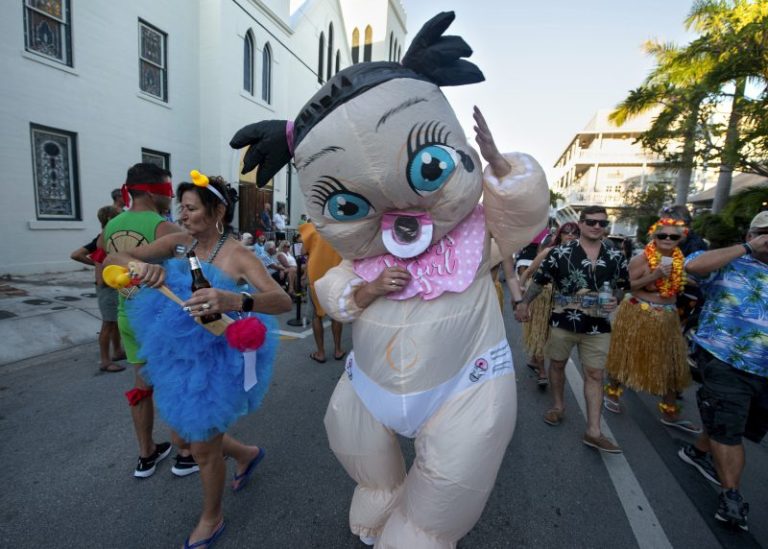There are two ways that a population can increase in size: more people being born, or fewer people dying. Either add people at the front end or keep them alive at the back end and the number of people climbs.
On Tuesday, the world’s population climbed to 8 billion people, the United Nations announced — an announcement rooted less in a careful tally of every living human than an orchestrated recognition of long-standing trends. A central trend? Fewer people dying. Meaning the world’s population isn’t just getting bigger, it’s getting older.
The Washington Post’s graphics team has a fascinating exploration of what that means for any individual person that I encourage you to explore. But it’s worth drilling down on how this same trend is visible in the American population.
A century ago, there were about 110 million people living in the United States. Over the next 100 years, the country’s population tripled. That was, in part, a function of the baby boom that began in 1946, certainly, but it’s also because Americans are living longer than they used to.
You can see the shift in the population below. In 1922, 81 million of the nation’s 110 million residents were aged 40 or under. In 2020, 154 million of the country’s just under 330 million residents were aged 41 and older.
You can see the effects of the baby boom on that chart. The orange section begins to surge in the mid-1940s, slowing in the mid-1960s. By the 1990s, it’s flat. Meanwhile, the purple section begins surging in the mid-1980s — 40 years after the baby boom began.
The point of that chart is simpler than its details, though. Just look at how the proportion of purple to orange shifts. That’s the split between the two ways in which population can grow. Since 1990, America has grown from about 250 million to 350 million people. Nearly 80 percent of that population growth was in the population that’s over the age of 40.
We can visualize the shift by looking at the oldest and youngest elements of the population as a percentage of the total. In 1900, more than a fifth of the country was aged 18 or under; less than 3 percent was aged 65 or older. In 2020, about 12 percent of the population was aged 18 or under, only a bit over three percentage points more than the portion of the population that was aged 60 and up.
Much of that shift is a function of the baby boom, visible in the chart above as the lump just to the left of “18 and under.” But not all of it is. The percentage of Americans aged 75 and older — older than the oldest baby boomer was in 2020 — climbed from 3 percent of the population in 1960 to 4.4 percent in 1980 to 5.9 percent in 2020 to 7 percent at the last census.
That, again, is a function of expanded life expectancy. The coronavirus pandemic ate away at life expectancy in the United States, but the trend for the past 60 years has been climbing upward. Those are the twin components of the expanded population of older Americans: more Americans reaching age 65, and more Americans living longer once they get there.
There is understandably concern about how the population is shifting from younger to older, from more orange to more purple on that first chart. Elderly Americans are less likely to work and pay income taxes, for example.
But there is at least one point of consolation to be taken from the day’s news: At least this isn’t just a concern in America.

